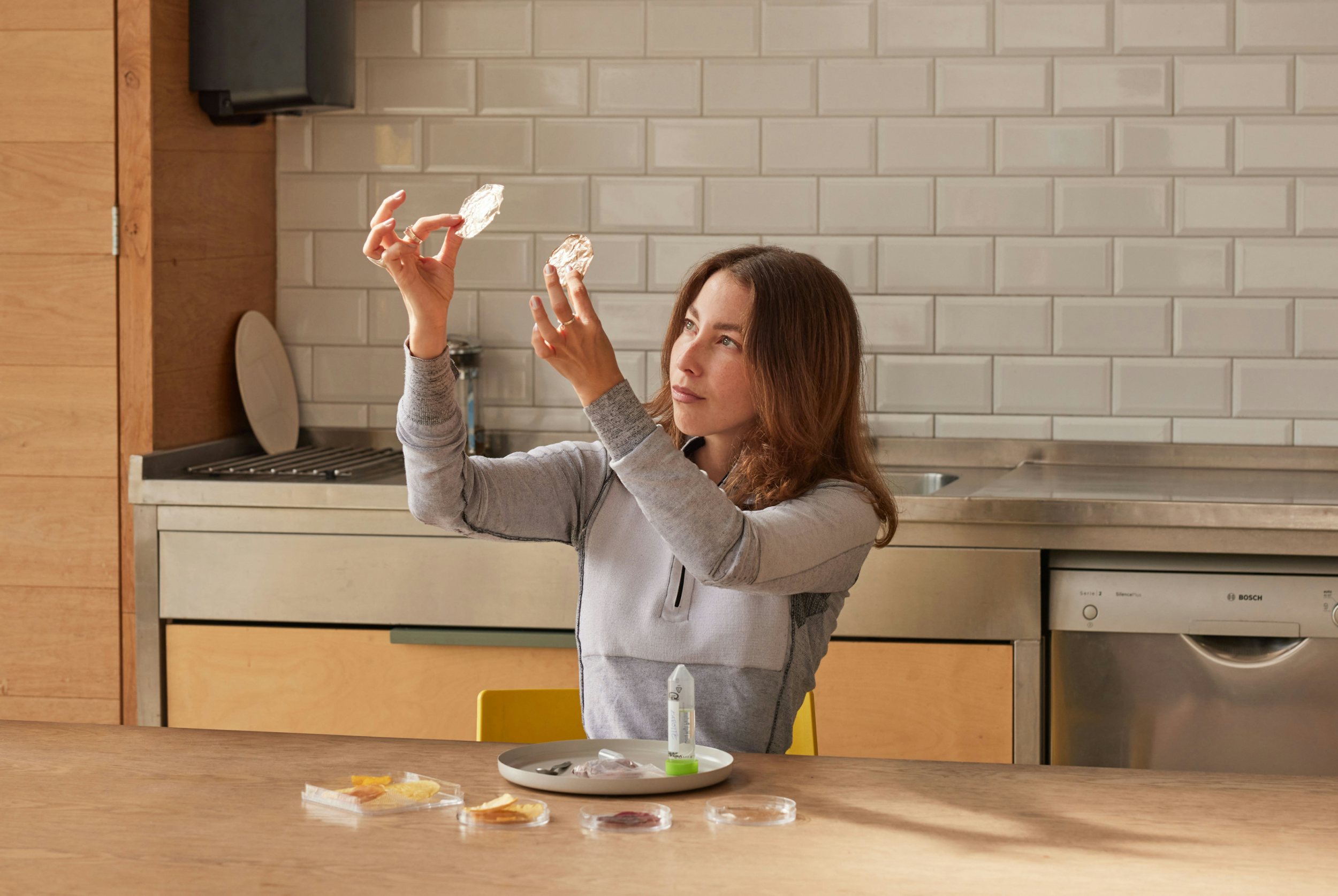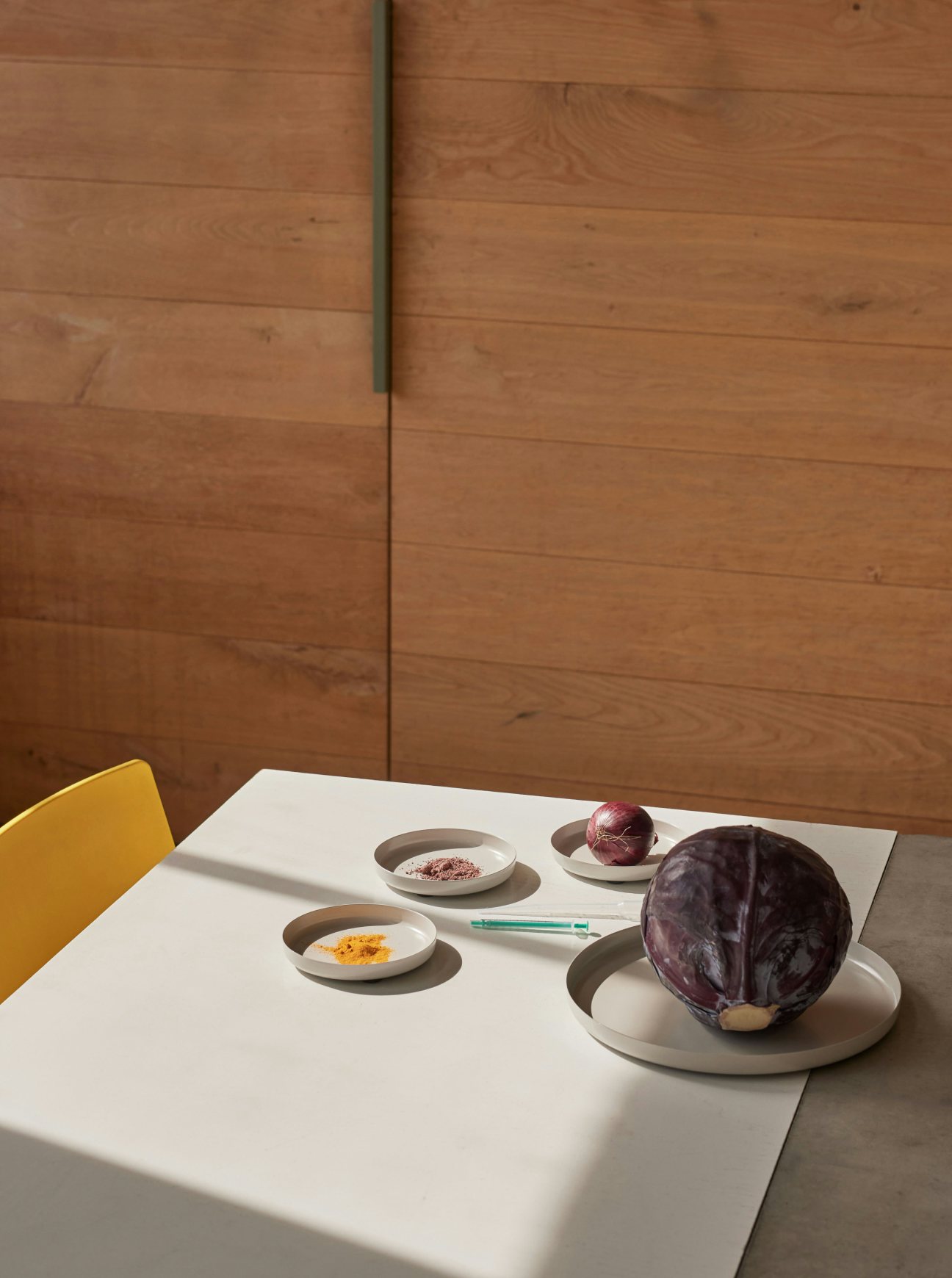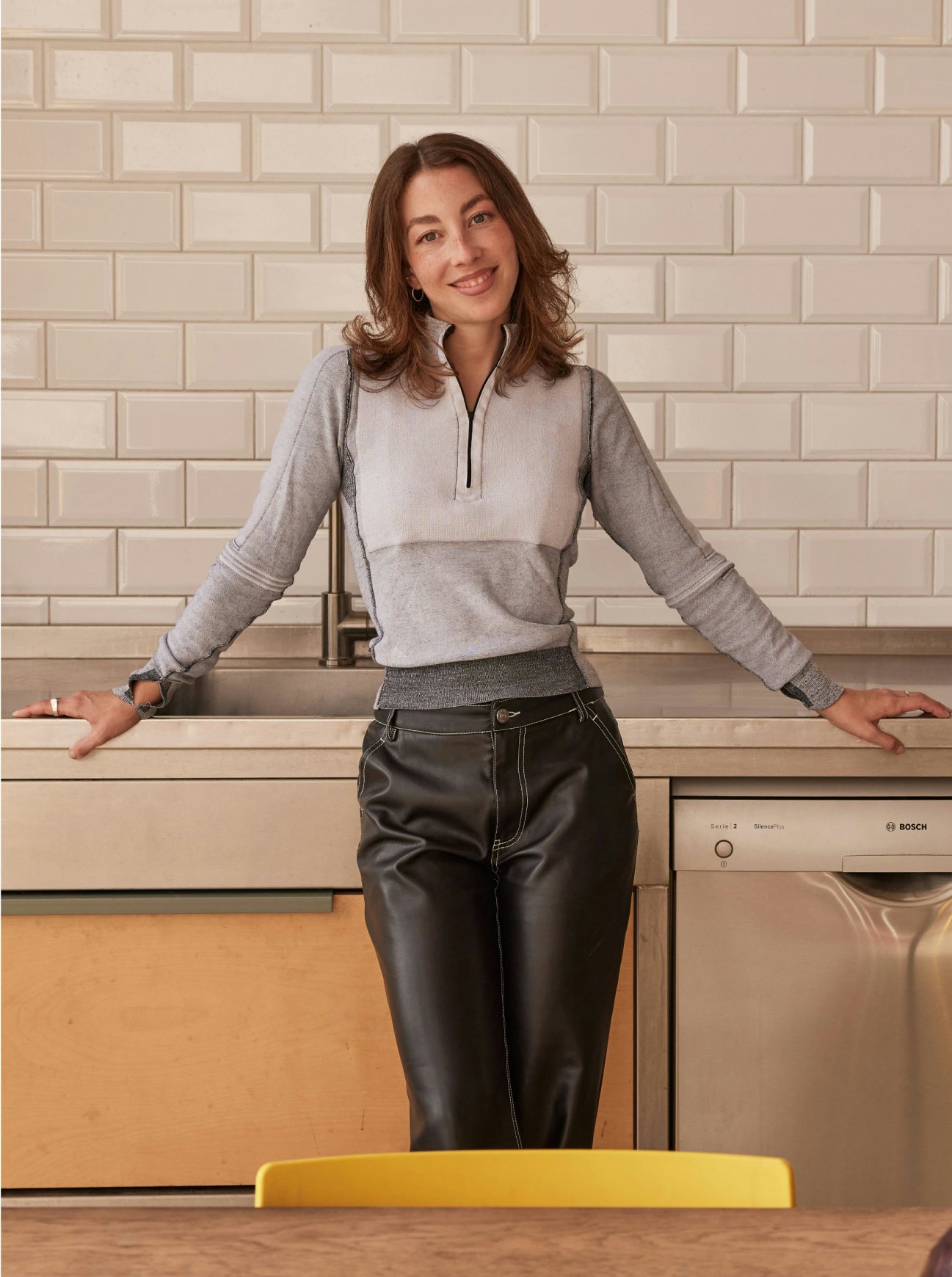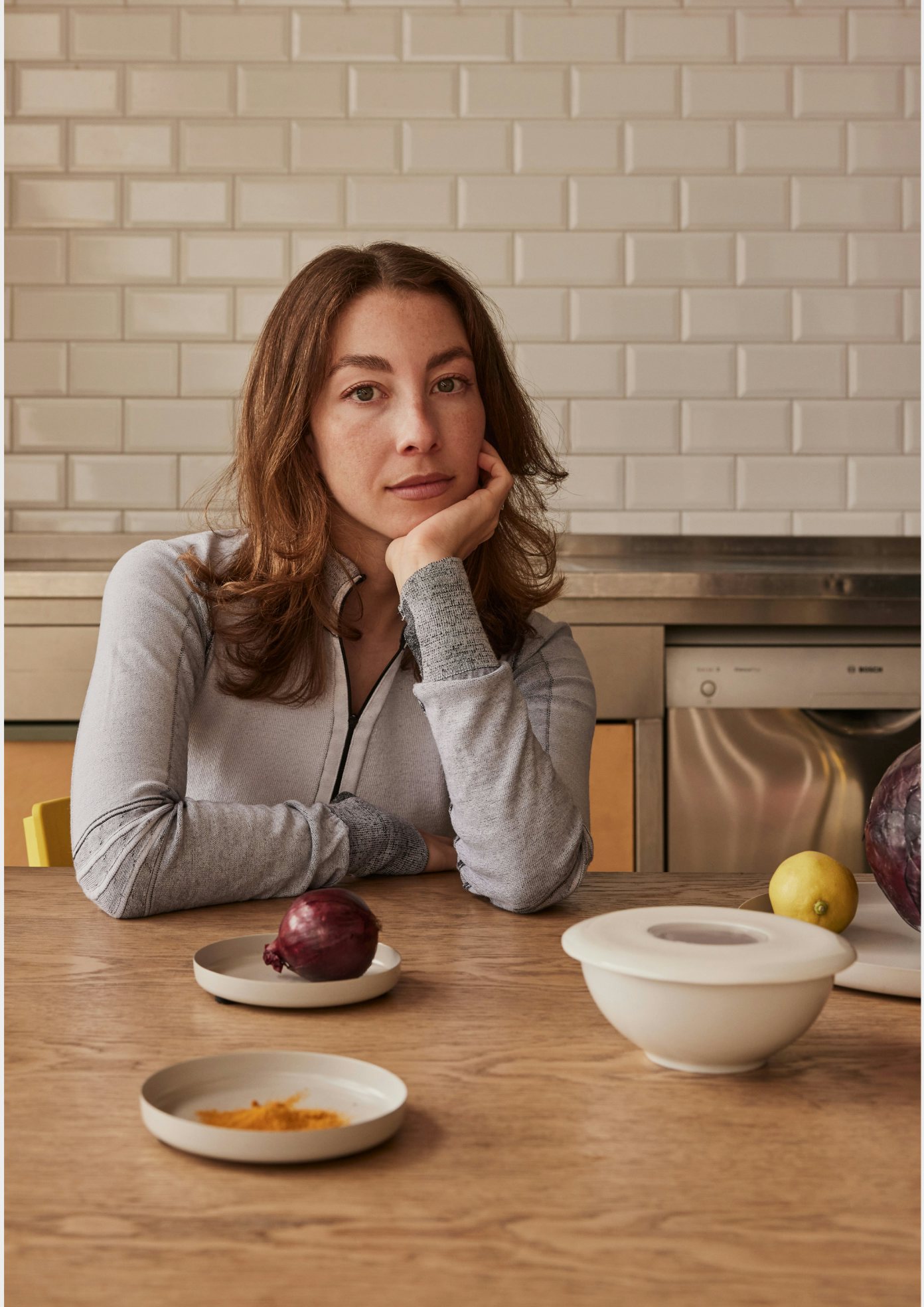
Vor-
Koster
Kimia Amir-Moazami
To combat food waste, Kimia Amir-Moazmi is working on a product that allows consumers to see for themselves whether food is still safe to eat. The design is inspired by a plate that we often use to cover food in the fridge and fits any bowl or container. The main component is a film that reacts to the PH value of what is inside. By changing color, it shows whether protein-containing food is still edible or already spoiled.
A lot of food is thrown away worldwide because the expiration date on the package has passed, even though the quality is often still good. In today’s society we rely much less on our senses to see, taste or smell whether something is still good. The result is that 60% of total food waste happens in people's homes.
We spoke with Kimia about designing products to change consumer behavior and how we can waste less food with smart solutions.
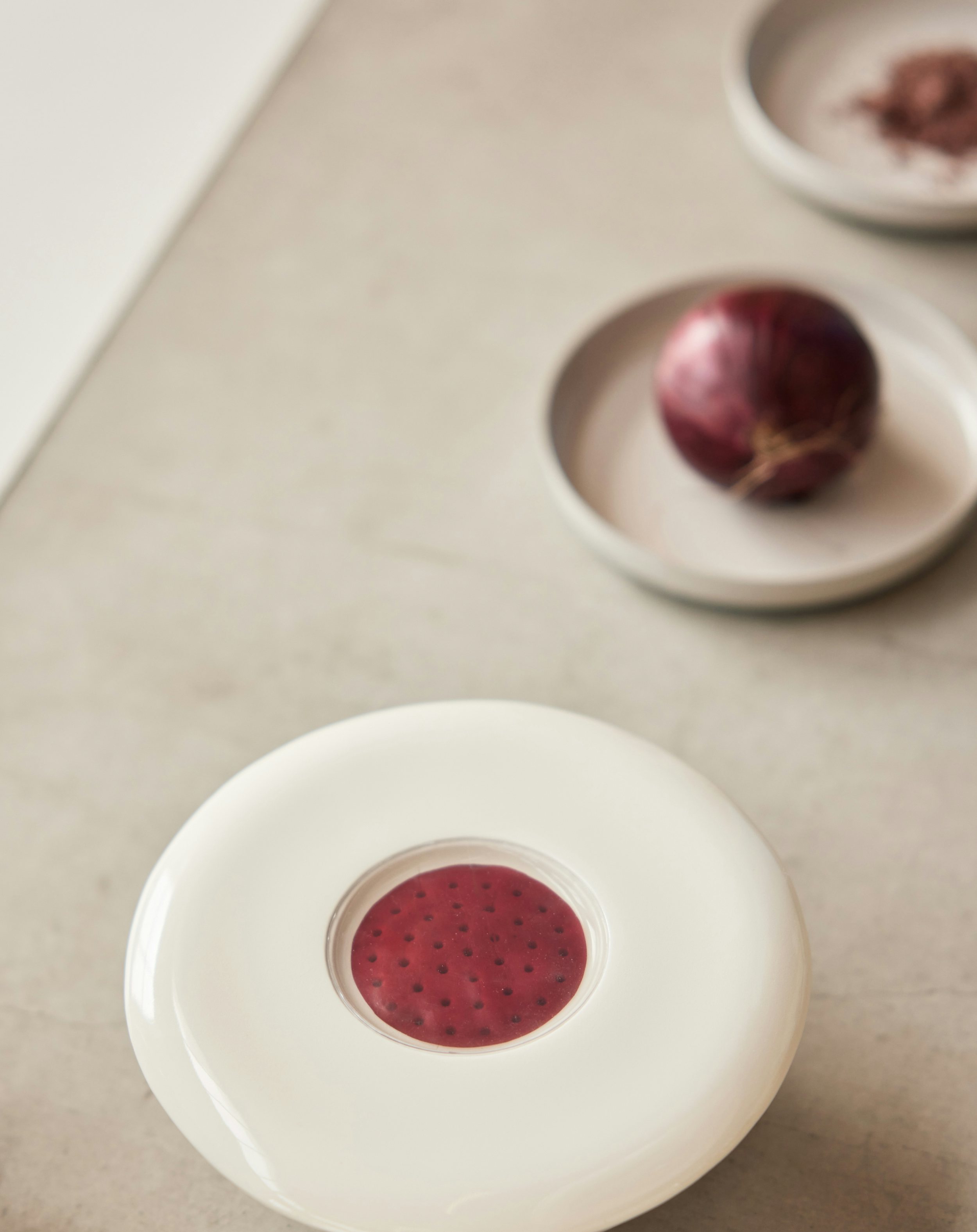
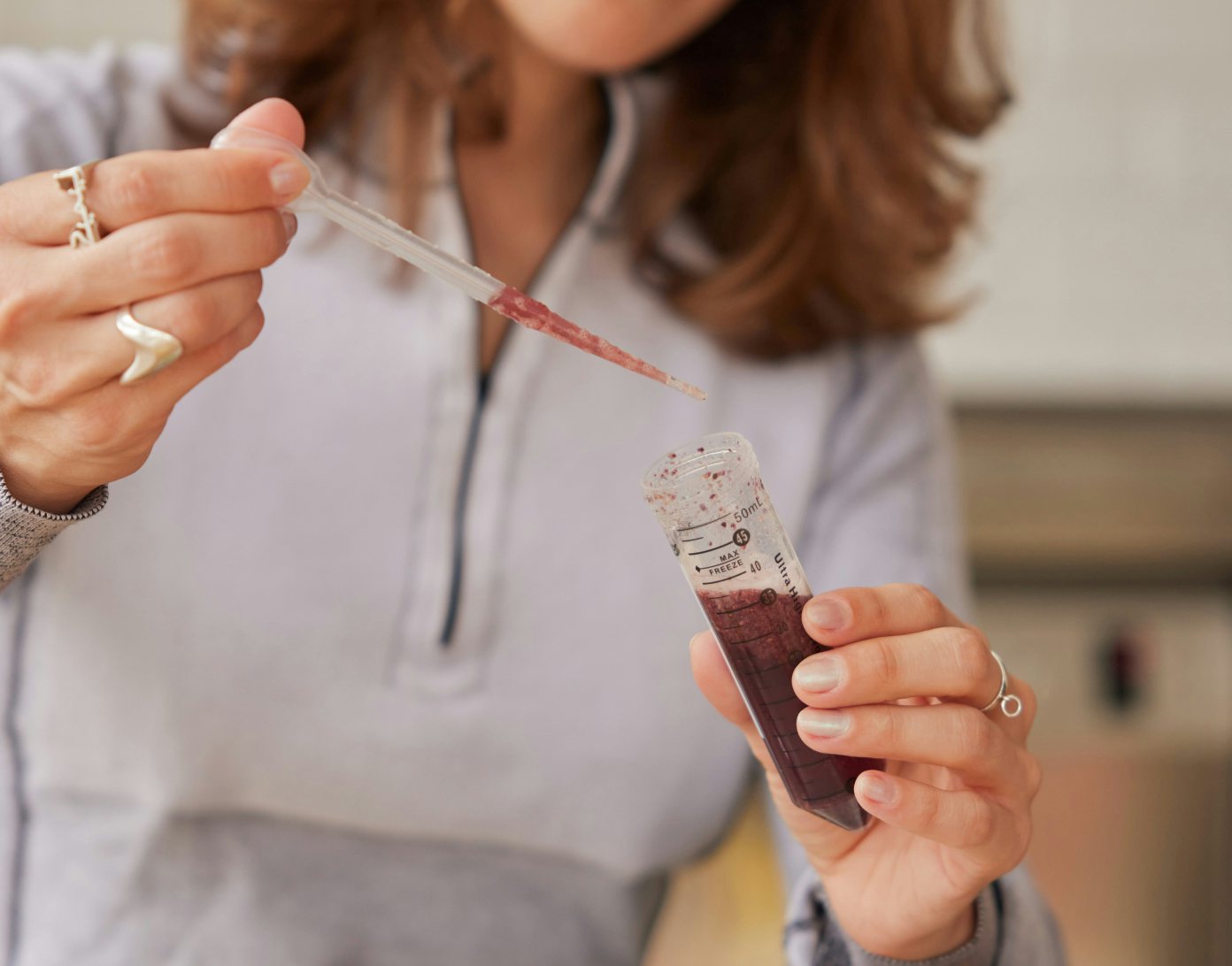
Photography: Anouk Moerman
Film: Blickfänger
Hi Kimia, so tell me, what drives you, what is your passion and where does it come from?
Growing up here in Berlin I always knew that I wanted to go into a creative direction. I always enjoyed working with my hands and was fascinated by everyday utility products. The thought and detail that comes with designing different kinds of tools, such as writing tools or cutting tools, interests me. My idea was to study design and to focus on designing useful and beautiful objects. Plus, I started to realize that everything already exists, so why should I design a new table or a new pen? I started to see that only its function is not a good reason to bring a new product into our world. I got very passionate about the question ‘how can we rethink design to use it as a force for sustainability, in terms of environmental and societal issues?’.
You say that as a designer, you want to make a positive impact. What would you like to create?
During a study trip to Dutch Design Week and the Design Academy, I saw many projects and concepts concerning for a better society for the first time. I was fascinated by the quality, the depth of the research and the passion of the students. I understood that design is not only about the physical outcome. Research is just as important, and sometimes the physical part is merely a way to transmit information. I learned to see products as vessels for information and that changed my perspective on how to approach design.
I started researching how we can use design to solve a sustainability issue, rather than to empower consumerism. When I was looking for the right approach to my graduation project, I got into the topic of food waste.
So food waste. Can you tell us about this problem you want to solve?
By questioning who has access to what kind of food and why, I learned that hunger is still a major problem in our world and even when there is access to food, it is not guaranteed to be nutritious. Access to healthy food is a privilege from which many people are excluded. People who are already struggling to make ends meet are forced to make unhealthy choices for financial reasons. At the same time, I discovered that over 60% of food waste happens in households. That is not just food, but also money wasted.
I decided to design something that can be used and have a direct impact on anyone, also for those with less money to spend on healthy food. Everyone is affected by food waste or contributes to it. I wanted to create something that can help people to save food either for sustainability or financial reasons or both, no matter your background or financial status.
With Vorkoster I wanted to design the banana peel for every food product.
You say that most food is wasted at home, in the daily lives of people. What do you think could be done here?
When it comes to food waste in households, a lot of it is a result of confusion that comes with expiry dates. We have the expiry date, the date after which something should not be eaten for health and safety reasons. And then we have the ‘best before date’, which indicates that it’s best consumed before a specific date. But this does not mean it has gone bad after it. Most of the time it’s still safe to eat. There is a lot of research that shows that people are misunderstanding those dates, which leads to unnecessary waste.
Food waste is also related to the lack of using our senses. We have these natural abilities to check the quality of food through our senses, our sight, smell and taste. A banana peel gets brown, you see it. You can test if an egg is still good by putting it in a container of water. if it sinks to the bottom, you can eat it. If you smell it, its way too late.
And milk goes sour, you taste and smell it. I decided to design a product that is inspired by our senses to extend the safe use of food. With the goal to use food much longer than most dates mentioned on packaging.
What is the product you are designing to extend the use of food beyond the date on the package?
With Vorkoster I wanted to design the banana peel for every food product. It is a lid that you can put on every container that you use to keep your food. It includes a foil that measures the PH-value of the food. It reacts to the level of ammonia that is present, a gas that is created when a piece of protein containing food like chicken is running bad and can be detected in the air. The color of the foil changes depending on the quality of the food. So, you see the status of your food product directly when you open your fridge.
Right now, we are focusing on getting the technique working on protein-based food, these are high risk products such as meat, fish and other animal products.
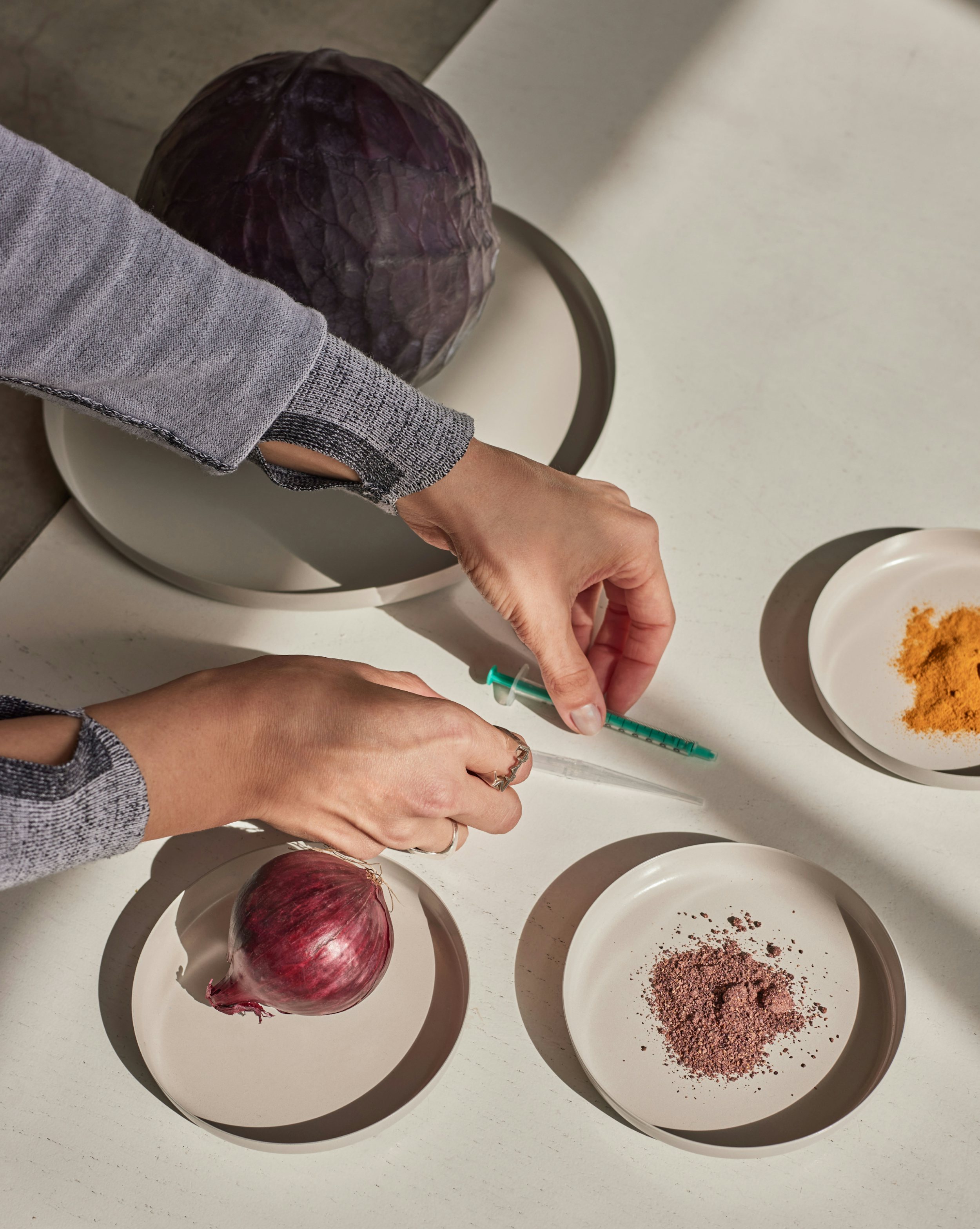
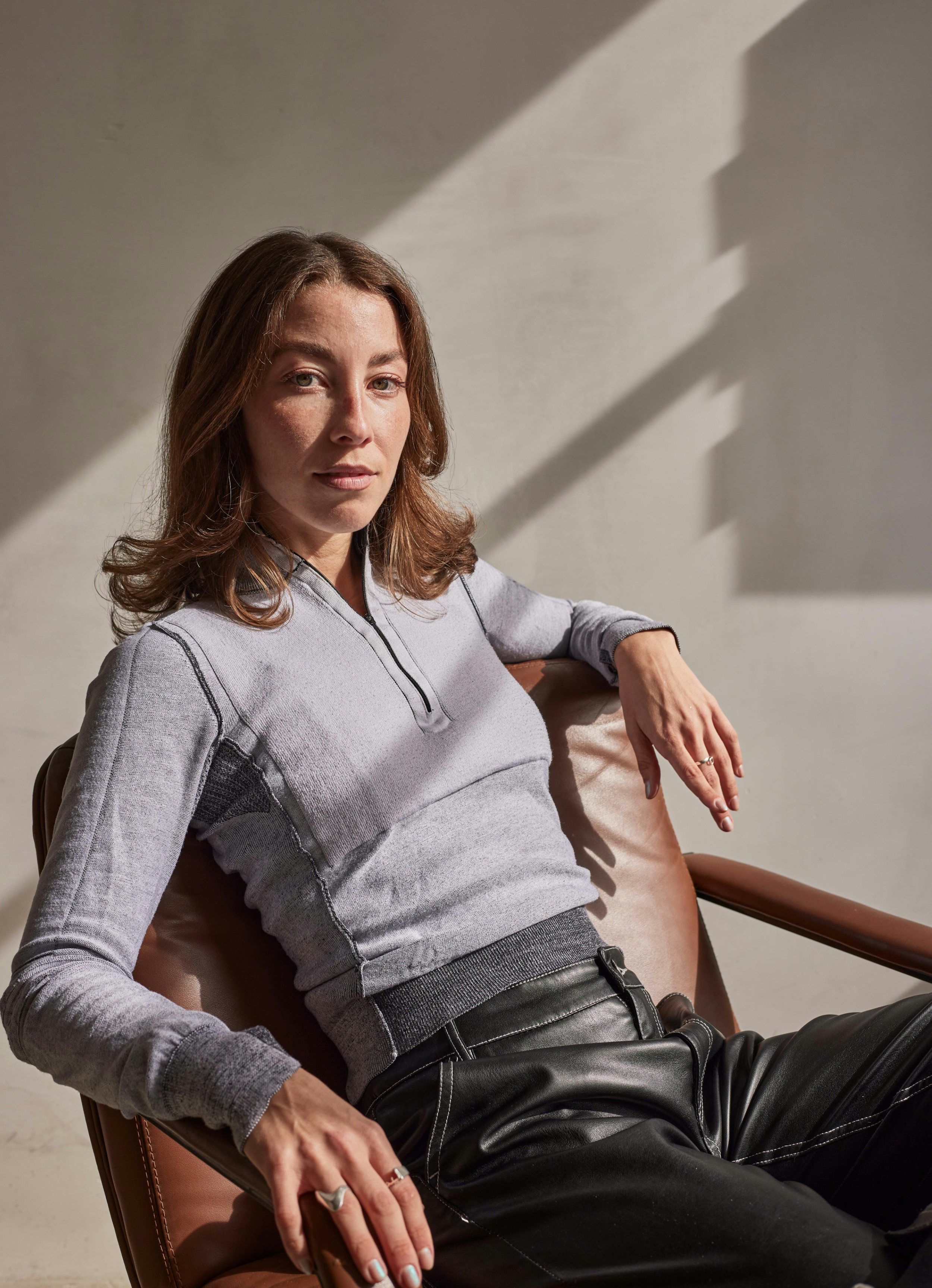
You are designing a product that can be used on any container that people use to keep their food. How important is aesthetics for you?
Inspired by Japanese design principles, I wanted to design as little as possible. The design shouldn’t be disturbing, focus on fulfilling its function, while still having a certain beauty. The shape was inspired by plates that we use upside-down to cover our food leftovers. People are already familiar and comfortable with this interaction, so I wanted to create a homage to this. Also, it helps to create awareness and change behavior. By designing a lid, the use of my product stays flexible and is not limited to one type of container.
Vorkoster’s main function is to support our senses. I want the experience of the product itself to be positive on a sensational level. I am thinking a lot about how people experience it and how they value it. Aesthetics help to make people use and trust a product, to make them love it.
Trust also has to do with the material used. This is why I am now exploring the direction of using porcelain. With porcelain I feel I reach that feeling of trust a lot better than with, for example, plastics. But I also know that using porcelain will lead to a more expensive product, and I want to make the product as accessible as possible. Right now, we are still researching the options.
You want to make the lid accessible for everyone, whether it's made of plastic or ceremics. What is the commercial feasibility of your product in the current market?
I started with Vorkoster as my graduation project. Thanks to a residency period at a scientific institute in Potsdam (Fraunhofer IAP), I met the very passionate scientist Dr. Sany Chea who wanted to work with me on this project. Her knowledge was very helpful in developing the prototype. We had one prototype with working foil ready.
Due to the overwhelming interest afterwards, we decided to continue with Vorkoster together. We got a scholarship for one year and could focus completely on developing it further. We also looked at market possibilities and joined the ‘Global Grad Show entrepreneurship programme’ at INSEAD Business School. On top of that, we completed the ‘Creative prototyping x Sustainability course’ at the Berlin University of the Arts.
The challenge with Vorkoster is that it is a product that deals with food quality and expiry dates. This is a sensitive topic, so the technology needs to be developed to a point that it's truly consumer friendly, safe and clear. Before we can go to the market, this needs to function flawlessly. This is what we are working on right now. It’s hard to predict how much time we need, but I hope that in two years we have brought Vorkoster to the market.
Do we really need the lid, or can we also work with just the foil?
Getting an innovation to the market is a challenge. Especially when you want to be 100% sustainable. You have to make choices. What are the biggest dilemmas for you?
The difficulty we encounter at the moment is that the color changes in the lid are not intense enough. This basically means that the technology is not yet doing exactly what we want. I have a working prototype that does function well, but we encounter difficulties now that we are experimenting with scaling it up. The colors should be really clear, so there is no room for misinterpretation by the user. We want a traffic light effect, but right now we get soft color tones.
In order to get this right, we really need a better technological support system. We got a bit stuck in this and realized that we cannot manage with just the two of us. We decided to talk to other companies who are working with similar technologies . At first, we were reluctant to do this, because we thought we had to protect our idea. But we won’t get further if we close it up. Sharing our dilemmas is the only way to get help and the right input.
During the process of developing Vorkoster, we also looked at how we can make the technology feasible for different kinds of use. Do we really need the lid, or can we also work with just the foil? We created this idea of test stripes that you could use directly on the product. The downside here is that these stripes would not be reusable like the lid, so we started looking into using a circular algae-based material. So many dilemmas. Do we even want a throw-away product? Which solution solves the problem most effectively and creates the least harm?
I want Vorkoster to be a knowledge base, of how to identify if you can still eat something.
So you are developing your technology further. How do you see the future of your product and what will it take to get there?
This project is a collaboration between science and design, so both parties need to be involved to make it a success. We are still in the research phase in the lab. Sometimes the progress you make goes very fast. But sometimes you get stuck with a problem for weeks. This makes it hard to plan. Now that our year of scholarship is over, there is no funding to focus fully on Vorkoster. So we have to work on other projects, to pay the bills.
To bring Vorkoster further, we need to make our network bigger and get input to find new solutions. It’s a mix of finding funding, making time, and collaborating with other experts.
Then we can finally take the step to scale it. For this year, I decided to do a master at the Design Academy in Eindhoven, which will improve my skills and network. In the meantime, I want to meet the right people and find additional funding to get Vorkoster to the next level.
What is the most important message you want to get across and who should hear it? How can people join you?
My most important message to everyone out there is: use your senses! I want Vorkoster to be a knowledge base, where you can learn to understand different processes of how to identify if you can still eat something. I want to spread this knowledge to create different behavior and attitude towards food and the products that we consume. My message is not so much about what we consume, because that can be very connected to financial status. I would like to focus the debate on hów we consume.
Instagram: @kimia_A_M
